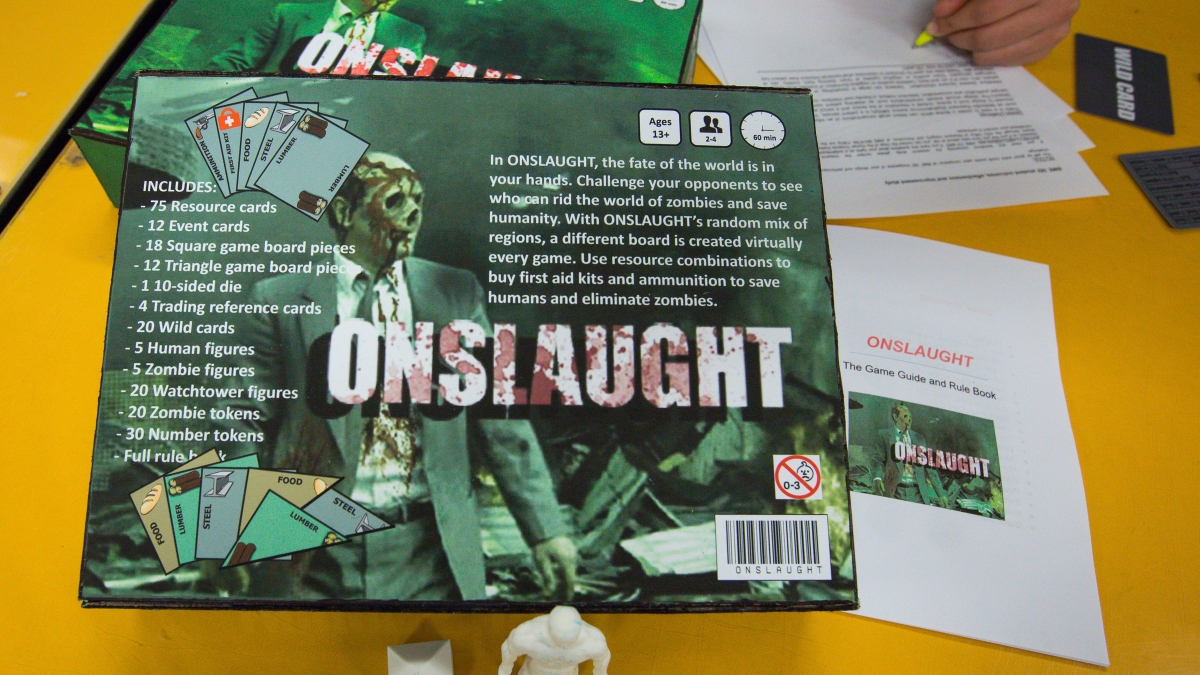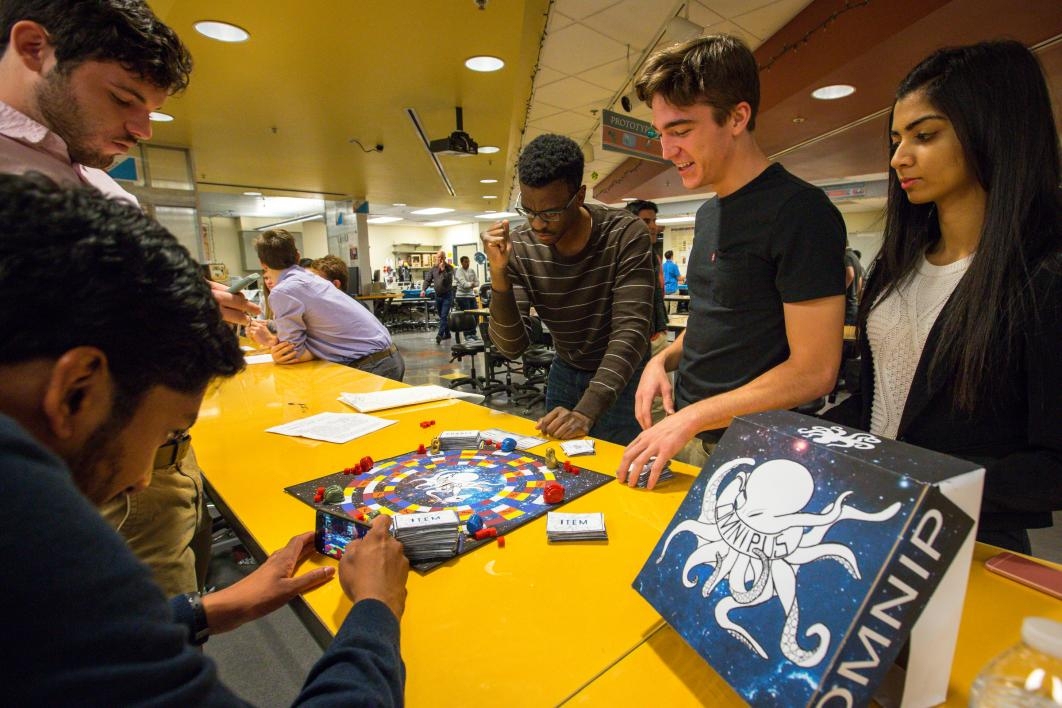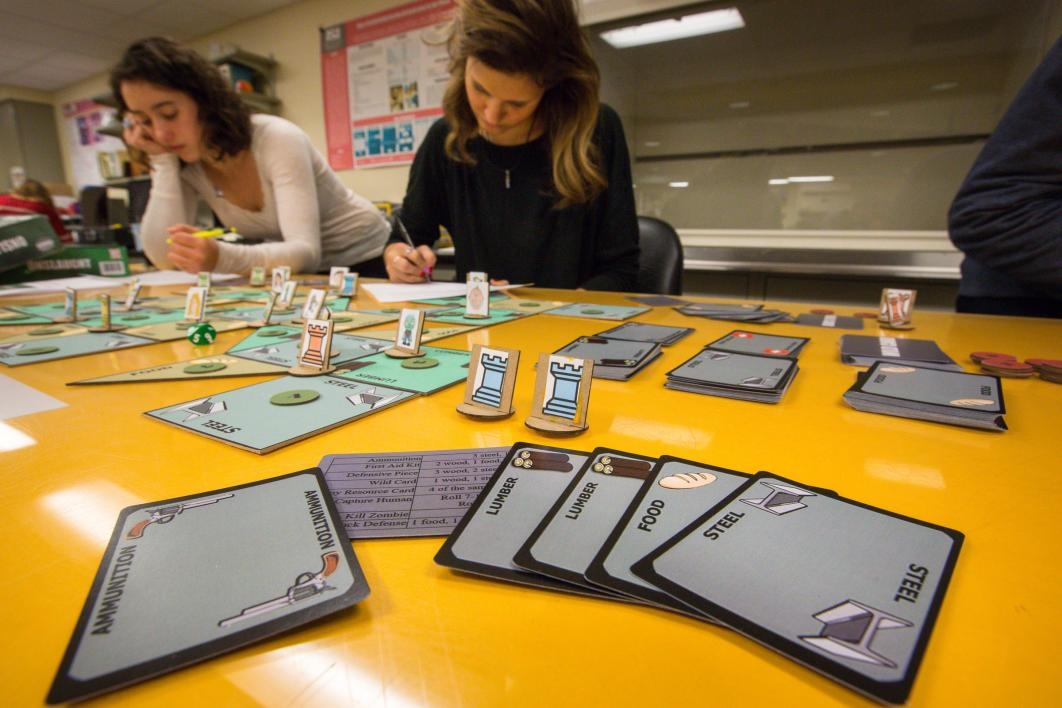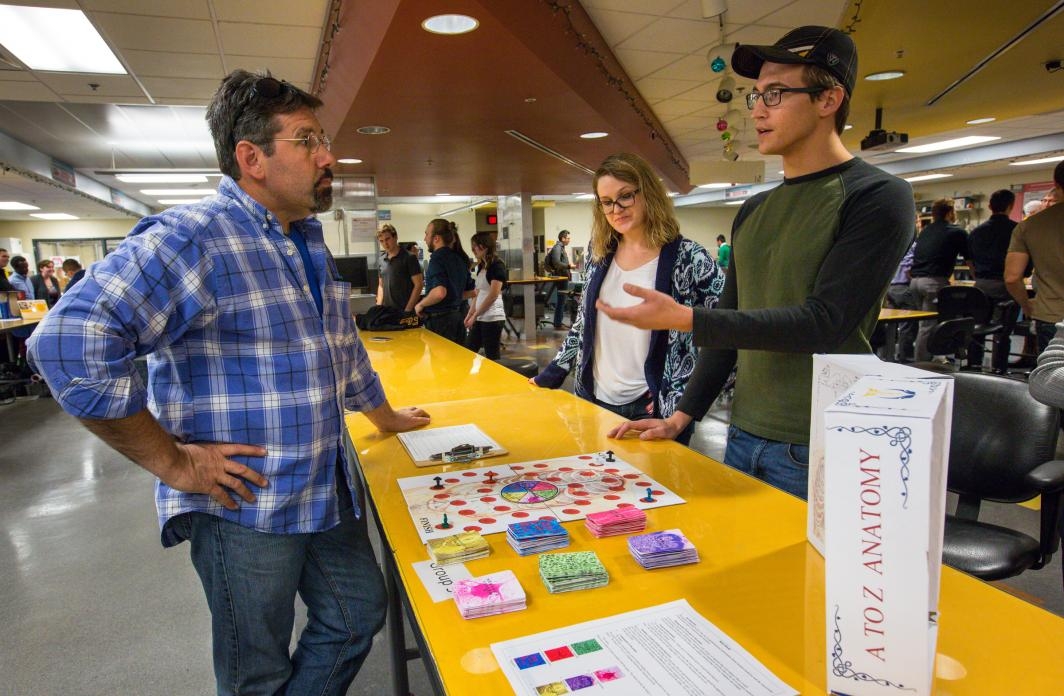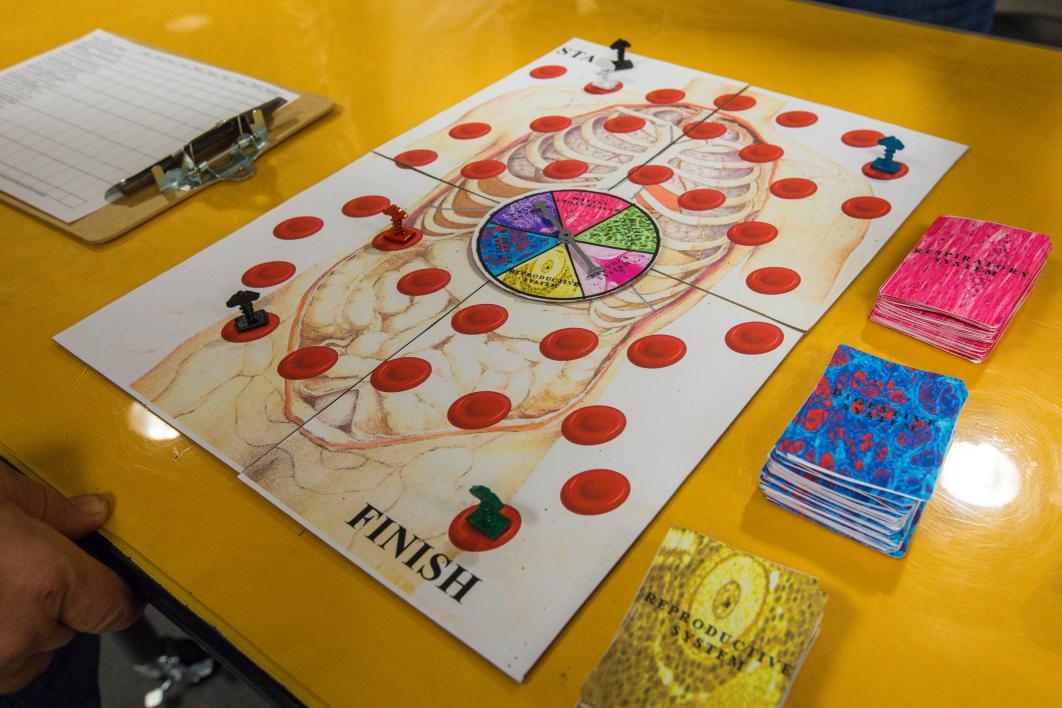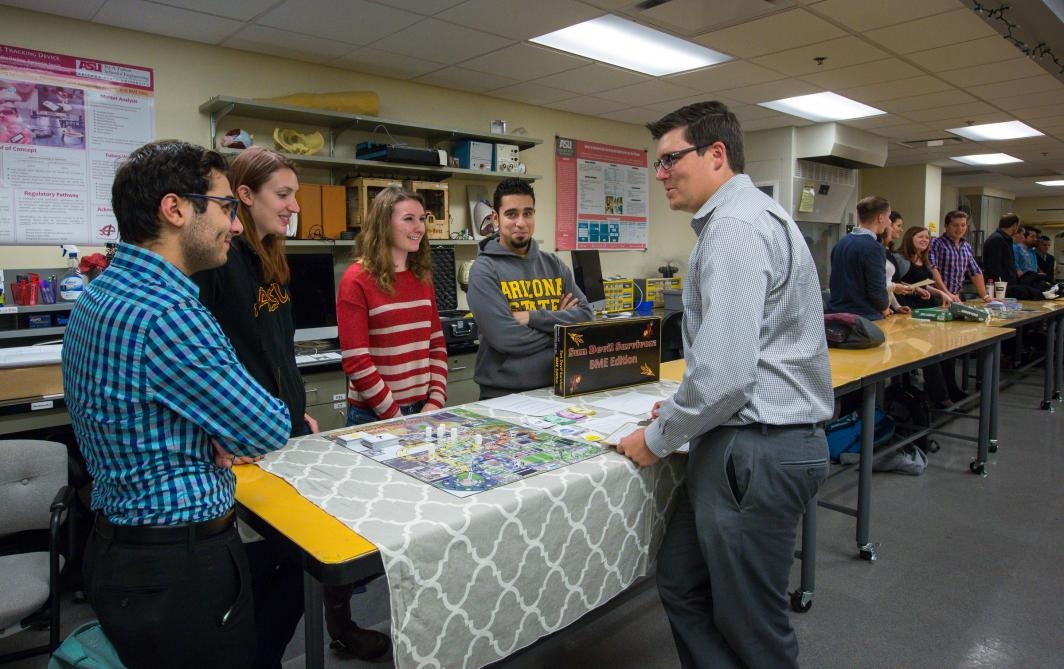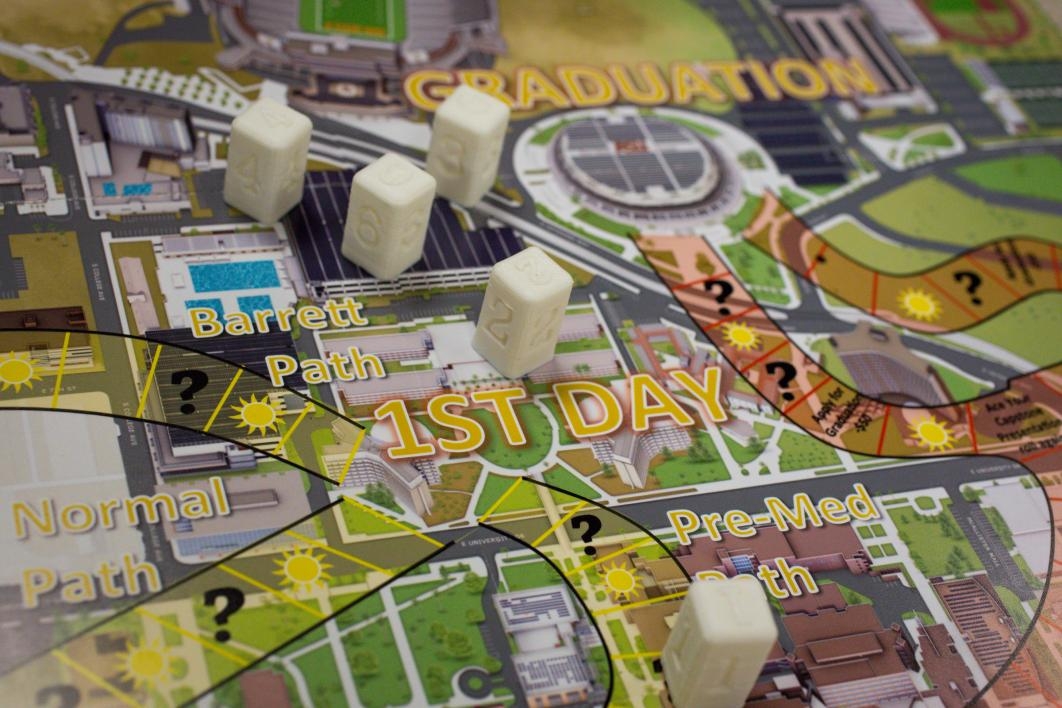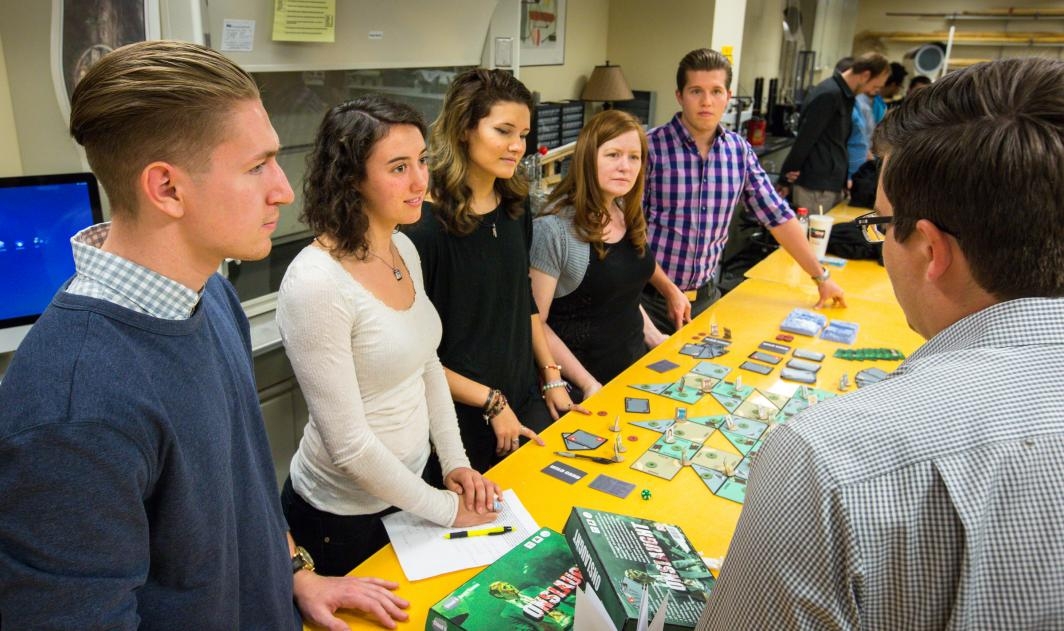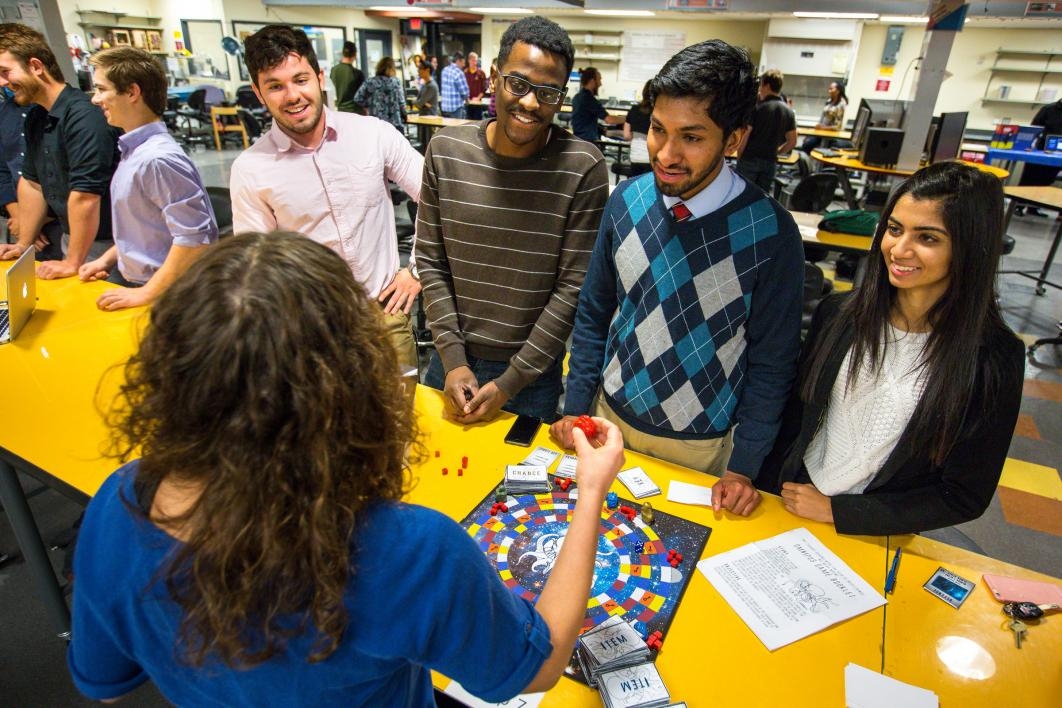It’s Professor LaBelle, in the laboratory, with a pacemaker, and no one is Sorry!
Need a Clue? It’s one engineering professor’s creative approach that’s captivating students.
“I usually have 100 percent attendance in my class Friday mornings at 8 a.m.,” said Jeffrey Labelle, assistant professor in the School of Biological Health and Systems EngineeringThe School of Biological Health and Systems Engineering is part of the Ira A. Fulton Schools of Engineering. and the Biodesign Institute at Arizona State University.
So, why is BME 382 — Biomedical Engineering Product Design and Development III — as popular as Park Place on Fridays when other classes are as deserted as Baltic Avenue?
The end game of the bioengineering class is to teach engineers how to make prototypes of medical devices like pacemakers. To accomplish this, LaBelle has his students form into teams and build real board games.
He said it’s not a Risk.
“I try to convince my students over the whole semester that this works,” he said. “The process of prototyping, it doesn’t really matter what it is — it’s the process that’s important. The board game allowed me to take the product out of the limelight and stay focused on the process.”
Students in the program study an FDA-regulated design curriculum for eight semesters. LaBelle’s class is the last semester before senior year, when they will take Biomedical Engineering Capstone Design.
“I wanted to cover in one semester what they will do in two semesters,” he said. “It had to be simple, short, sweet, focused. … I really believe that an engineer gets very, very good when they’ve built something first, and then go and design something else. It puts them in that box of what do I have to work with? What are my tools? What can I build with? After that, it’s the process of building something.”
Students start with soft skills, like team formation. (“I call it marriage counseling,” LaBelle said.) How will they work together? What roles will they play? Who does things at the last minute? Who is prepared ahead of time?
Teams begin by playing games and looking for specifications. “It doesn’t matter what product you have,” LaBelle said. “All products out there have specifications.”
Everyone back to the ancient Egyptians has played board games, so that end wasn’t a stretch for students. Bioengineering has design controls — what the rest of the world calls standards. For example, in board games, playing card size is standardized. Medical design has patents. Board games have copyrights.
“A lot of the processes are really the same,” LaBelle said. “A 3-D printer, a laser cutter, injection molder — tools of the trade in medical-device design — is also used in the gaming world. It’s so synergistic it’s hard not to see it’s so relevant, but zombies on the cover take your attention away from the fact it’s not a pacemaker.”
Most of the games involve zombies because of popularity (LaBelle cited “The Walking Dead” episode that 16 million people watched, crushing a football broadcast on the same night, which drew an audience of 13 million). Last semester’s Onslaught game challenged opponents to see who could rid the world of zombies and save humanity by buying first-aid kits and ammunition.
Sun Devil Survivor: BME Edition (no less terrifying) took various paths through the Tempe campus from the first day as a freshman through graduation.
Students develop the game, put together all the content, sculpt it, laser-cut it and produce what are incredibly professional-looking board games.
“They do a good job,” LaBelle said. “I call them really ugly final products or really good-looking betas.”
At the final, game producers, developers and creators show up to evaluate the games, along with reps from medical outfits like Mayo, Banner, W.L. Gore and Medtronic. Teams present their game ideas, with a five-minute pitch, to a panel of judges.
Remy Turner was one of the judges at the final. Turner is commercial programs manager at BioAccel, a non-profit organization that assists entrepreneurs with funding and business expertise to develop early-stage life science technologies. He explained why he turned out to judge the finals.
“We are working to improve the quality of engineers that come out of sources here in Arizona,” Turner said. “We give back to the educational community and offer our input in terms of projects. We work with Jeff’s class as an example of that.”
Turner thought the games were “pretty good,” almost all of them identifying a unique niche to target in terms of customers.
“All of the designs were applicable in terms of what the customer segments need,” he said. “One of the things that we try to pull in is a broader perspective on product design. I think they did a good job in trying to address customers' needs.”
LaBelle said he gets judges from across the spectrum to judge final products.
“Someone may come in as an engineer — we had one from IBM — who loves to play games,” he said. “They looked at it from an engineering standpoint — how well is it put together? — but then they looked at from a gaming standpoint: Is it fun?”
Bingo!
More Science and technology
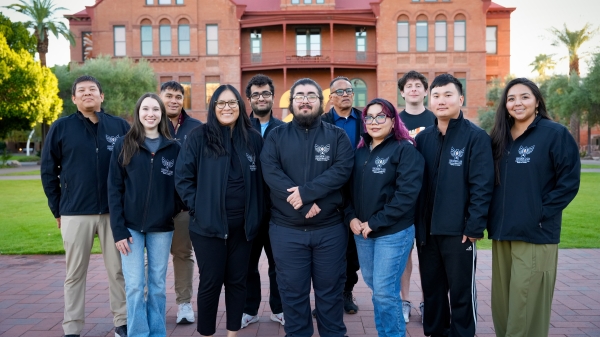
Indigenous geneticists build unprecedented research community at ASU
When Krystal Tsosie (Diné) was an undergraduate at Arizona State University, there were no Indigenous faculty she could look to in any science department. In 2022, after getting her PhD in genomics…

Pioneering professor of cultural evolution pens essays for leading academic journals
When Robert Boyd wrote his 1985 book “Culture and the Evolutionary Process,” cultural evolution was not considered a true scientific topic. But over the past half-century, human culture and cultural…

Lucy's lasting legacy: Donald Johanson reflects on the discovery of a lifetime
Fifty years ago, in the dusty hills of Hadar, Ethiopia, a young paleoanthropologist, Donald Johanson, discovered what would become one of the most famous fossil skeletons of our lifetime — the 3.2…
